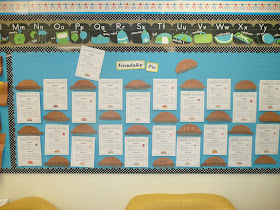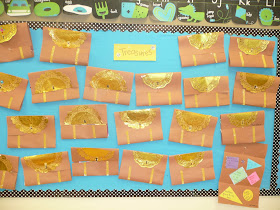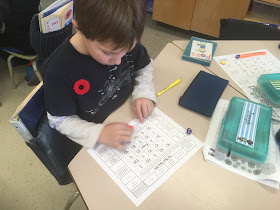This is what greeted each student (I mean surgeon) as they walked into the classroom (OOPS! operating theatre) on Tuesday morning.
The head of the trauma unit thanked the surgeons for coming in to help save the many patients that were on the list for surgery today.
Here are the list of patients who will need to be taken care of.
Do you recognize any of them? Many were on this week's spelling list.
The surgeons used their scalpels, worn their masks and gloves to ensure that no germs could be passed around and began the long morning of surgery.
Each patient had one or two letters that needed to be removed.
Once the letters were removed, the surgeons needed to add the special bandaid to show where the letters were taken away. Each bandaid needed to be marked with an apostrophe.
This may have looked easy, but it really was a specialized skill that only trained professionals can perform.
The head of the hospital showed up and made sure that all the surgeons were on the right track.
A lot of lives were saved this day!!
Each surgeon took one of the many patients and completed the special orders to ensure that the patient would be able to recover fully.
It was a job well done!
Thank you to Catherine Reed for sharing this wonderful interactive and memorable activity with me. I think the students had a great time learning how two words are used to make a contraction.
The students have been focusing on what they already knew about reindeer, what information they would like to know more about, and then worked in pairs to search for information.
Here are the questions that guided their search.
The questions had numbers and the cards placed around the room had a corresponding number.
They could read the question on the white cards and then search for the answers on the reading cards.
They practised writing jot notes on their recording sheet....again on the correct numbered section.
They were great little workers who helped each other find and record the information needed.
When they work together they are using co-operative conversation skills, learning to take turns, listen to other's points of view and sharing the reading and writing.
Here is the next math strategy that we are focusing on. We introduced the 'how to' yesterday and today we worked on many examples together as a practise. They seemed to catch on and were very quick in adding the number to ten to complete the equation.
Ask your little to explain their thinking. They are becoming comfortable with telling what their brain does as they try out the many strategies that they are being introduced to.





















































